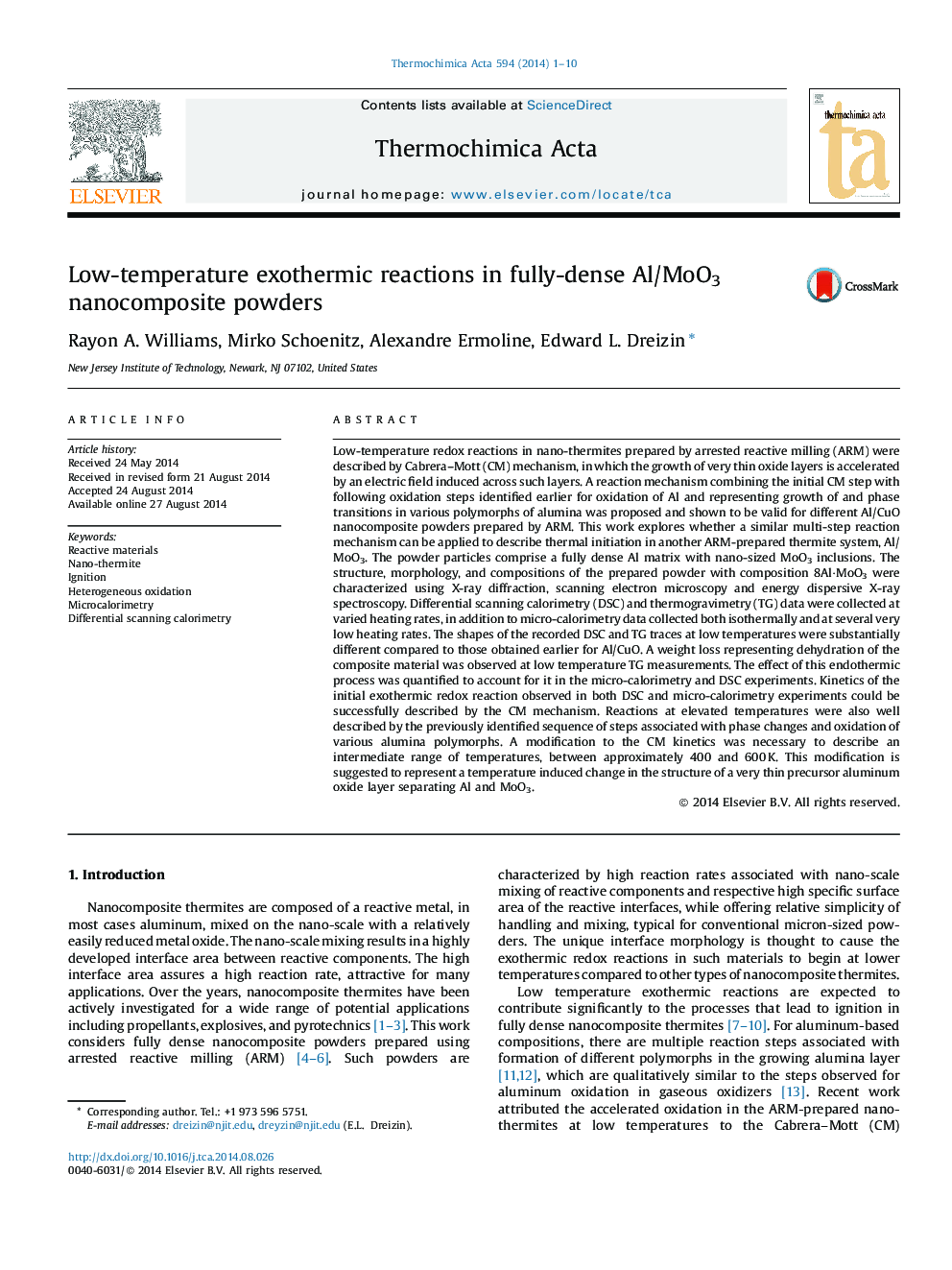| کد مقاله | کد نشریه | سال انتشار | مقاله انگلیسی | نسخه تمام متن |
|---|---|---|---|---|
| 673216 | 1459490 | 2014 | 10 صفحه PDF | دانلود رایگان |

• Low temperature exothermic reactions in 8Al·MoO3 nano-thermites are described by Cabrera–Mott model.
• Ignition in the nano-thermites is caused by subsolidus low-temperature exothermic reactions.
• Cabrera–Mott model combined with multistage model of Al oxidation describes reactions in thermites.
• Al·MoO3 composite prepared by milling are readily hydrated; dehydration must be accounted for in reaction models.
• Interface separating Al from MoO3 in the prepared thermites is discontinuous.
Low-temperature redox reactions in nano-thermites prepared by arrested reactive milling (ARM) were described by Cabrera–Mott (CM) mechanism, in which the growth of very thin oxide layers is accelerated by an electric field induced across such layers. A reaction mechanism combining the initial CM step with following oxidation steps identified earlier for oxidation of Al and representing growth of and phase transitions in various polymorphs of alumina was proposed and shown to be valid for different Al/CuO nanocomposite powders prepared by ARM. This work explores whether a similar multi-step reaction mechanism can be applied to describe thermal initiation in another ARM-prepared thermite system, Al/MoO3. The powder particles comprise a fully dense Al matrix with nano-sized MoO3 inclusions. The structure, morphology, and compositions of the prepared powder with composition 8Al·MoO3 were characterized using X-ray diffraction, scanning electron microscopy and energy dispersive X-ray spectroscopy. Differential scanning calorimetry (DSC) and thermogravimetry (TG) data were collected at varied heating rates, in addition to micro-calorimetry data collected both isothermally and at several very low heating rates. The shapes of the recorded DSC and TG traces at low temperatures were substantially different compared to those obtained earlier for Al/CuO. A weight loss representing dehydration of the composite material was observed at low temperature TG measurements. The effect of this endothermic process was quantified to account for it in the micro-calorimetry and DSC experiments. Kinetics of the initial exothermic redox reaction observed in both DSC and micro-calorimetry experiments could be successfully described by the CM mechanism. Reactions at elevated temperatures were also well described by the previously identified sequence of steps associated with phase changes and oxidation of various alumina polymorphs. A modification to the CM kinetics was necessary to describe an intermediate range of temperatures, between approximately 400 and 600 K. This modification is suggested to represent a temperature induced change in the structure of a very thin precursor aluminum oxide layer separating Al and MoO3.
Journal: Thermochimica Acta - Volume 594, 20 October 2014, Pages 1–10